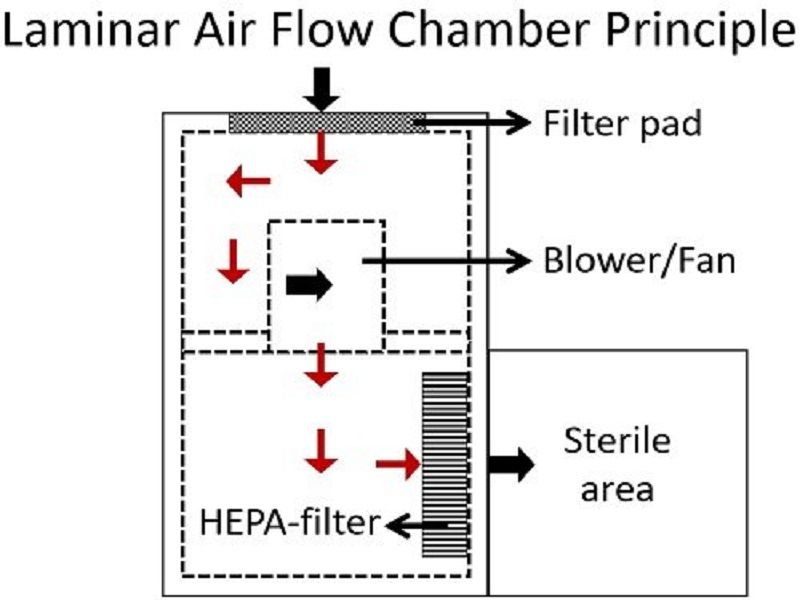Laminar airflow is a type of airflow in which air travels uniformly and orderly, with no turbulence or mixing. This is accomplished by sending the airflow through a series of filters that eliminate any pollutants before passing it through a system of ducts or enclosures intended to keep the air flowing smoothly.
In the pharmaceutical business, laminar airflow is commonly utilized to maintain a clean and sterile environment, which is crucial for the manufacture of high-quality pharmaceuticals and other medical items. The principles of laminar airflow in pharma are similar to those in other environments, but with particular concerns specific to pharmaceutical manufacture.
The key principles of laminar airflow in pharma include:
Cleanliness:
The primary objective of laminar airflow in pharma is to keep the environment clean and sterile, free of contaminants such as bacteria, viruses, and other particles that might damage the quality of the medications being manufactured. To do this, laminar airflow systems must be constructed and maintained to the greatest cleanliness standards.
Airflow control:
In the pharmaceutical industry, laminar airflow systems must be developed to regulate the flow of air and avoid turbulence or mixing of air within the production area. This is accomplished by employing a set of filters and a meticulously constructed airflow pattern that sends air from the ceiling to the floor in a consistent and regulated manner.
Air quality monitoring:
Laminar airflow systems in pharma must be examined on a regular basis to ensure that the requisite air quality is maintained. To monitor the degree of pollution in the air, particle counters, microbiological air samplers, and other technologies may be used.
Personnel control:
Laminar airflow systems in pharma must include mechanisms to regulate human mobility inside the production area in addition to managing airflow and monitoring air quality. Gowning rooms, airlocks, and other measures meant to reduce the danger of contamination may be used.
Maintenance and validation:
Laminar airflow systems in pharma must be maintained and evaluated on a regular basis to ensure that they continue to fulfil the appropriate cleanliness and air quality criteria. This might include replacing filters on a regular basis, measuring airflow, and performing other maintenance tasks to verify that the system is working properly.

Overall, the concepts of laminar airflow in pharmaceuticals are centered on keeping a clean and sterile environment devoid of pollutants and other sources of contamination. This is crucial for guaranteeing the safety and efficacy of medications and other medical items manufactured in these facilities.
In a nutshell:
Laminar airflow is a crucial component of many industries, including pharmaceuticals, where maintaining a clean and sterile environment is critical for ensuring the safety and efficacy of the drugs being produced. The principles of laminar airflow include controlling the airflow, maintaining cleanliness, monitoring air quality, controlling personnel movement, and regularly maintaining and validating the system. By following these principles, laminar airflow systems in pharma and other industries can help to ensure that products are of high quality and meet the required standards.
Overall, laminar airflow is an essential tool in the production of many products that require a clean and sterile environment, and it will continue to play a vital role in these industries in the future.
Also Read: A Complete Guide to Laminar Airflow System
http://hvax.in/blog/a-complete-guide-to-laminar-airflow-systems/
